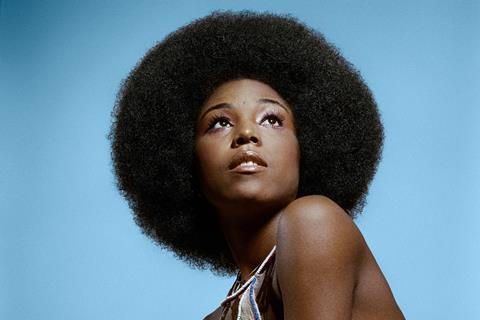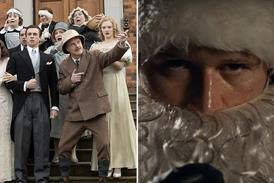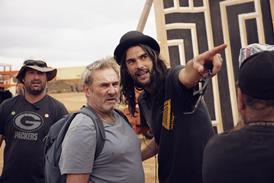Yemi Bamiro’s London Competition title about photographer Kwame Brathwaite features a wealth of archive footage

Dir: Yemi Bamiro. US/US. 2025. 98mins
“When art and politics converge, it can be a weapon for change”. So says a talking head at the beginning of documentary Black Is Beautiful: The Kwame Brathwaite Story, and filmmaker Yemi Bamiro spends the next 98 minutes resoundly backing up that statement. This exploration of the little-known titular US photographer, who is credited with popularizing the ‘Black Is Beautiful’ advocacy movement in the 1950s, plays as a fascinating slice of history, both cultural and artistic. It is also a fierce celebration of Black identity and freedom at a time when both are, once again, under threat.
A fierce celebration of Black identity and freedom
Premiering in competition at the BFI London Film Festival, the film is the latest work from British Nigerian filmmaker Bamiro, who has previously made documentaries including BBC series Fight The Power: How Hip Hop Changed The World and the football-themed Super Eagles ’96 (2022). The strength of Brathwaite’s imagery, together with the film’s straightforward approach to evergreen themes, should spark further interest, and a roster of starry talking heads and supporters including actors Gabrielle Union and Jesse Williams could also help raise its profile.
Kwame Brathwaite (who was born Gibert Ronald in Brooklyn, 1938, to Barbados immigrant parents and changed his name to Kwame in the mid-1960s), was a photographer for over 60 years until his death in 2023 at the age of 85. It was just a year after the publication of the book Black Is Beautiful, made in collaboration with his family and historian Tanisha Ford, brought him the recognition that had alluded him throughout his life. But his presence is strongly felt here, whether in archive footage or candid interviews filmed by his son, Kwame Jr, or through the hundreds of images that fill the screen. (Title cards emphasise all photographs show in the film are either by, or of, Brathwaite.)
Working with the photographer’s family, including his children and wife Sikolo, Bamiro has made a careful selection from a vast archive. There are plenty of familiar faces – everyone from Muhammad Ali and Nina Simone to Beyonce and Alicia Keyes (who appears in the film) – but there are also more personal images: of family and friends, of his time spent in Africa when he visited, later in his career, with the Jackson Five. There are also myriad photographs (and archive video) of New York’s Harlem in the 1950s, a colourful, predominantly Black community that Brathwaite documented with truth, honesty and beauty. “He chose to show us happy,” notes musician Swizz Beatz. “A lot of people just like to collect our pain.”
At age 18, Brathwaite, together with his brother Elombe Brath, founded the Jazz Art Society, later renamed the Black African Jazz Art Society, to showcase the work of the Black musicians they so admired. They also assembled an artists’ collective called Grandassa Models – one of whom was Kwame’s future wife Sikolo – with the aim of rejecting white influences (like chemically straightened hair). Their first performance/fashion show, held in 1962, firmly set out their stall – called ‘Naturally 62: The Original African Coiffure And Fashion Extravaganza Designed To Restore Our Racial Pride And Standards’, it was so successful it became a bi-annual event.
Brathwaite’s striking photographs of the models, and other figures in his life, speak to his incredible eye for detail and texture; whether working in colour or black-and-white, he highlights the contours and gradients of hair and skin, frames his subjects in ways which accentuate their individuality – a radical approach at the time. Whether reportage or portraiture, his work is intimate and personal, and speaks not just of a moment in time but gives a voice to an entire culture. “When you see his work, you see us,” says Union.
From that work was born the ‘Black Is Beautiful’ slogan, which became a powerful message of pride in the burgeoning civil rights movement. Throughout his life, Brathwaite remained committed to supporting and uplifting the Black community; that tireless work can be measured not just by the thousands of photographs he took, but in the real world change he helped bring about. Fascinatingly, he was instrumental in helping many African leaders secure independence for their countries. His adopted moniker was a tribute to Kwame Nkrumah, the first president of an independent Ghana, who is at the centre of fellow London doumentary The Eyes Of Ghana. (Unsurprisingly, Black Is Beautiful only briefly touches on the necessary sacrifices made by Brathwaite’s children and wife Sikolo to support him in his mission.)
One of the film’s most poignant moments comes when an emotional Brathwaite discusses the event that inspired him to become a photographer, when he saw a 1955 news image of Emmett Till, the 14-year-old who was abducted and murdered by lynching. As Black Is Beautiful clearly demonstrates, this put a fire in his belly which, combined with his immense creative talent, enabled him to wield his camera as an effective weapon for change.
Production companies: Misfits Entertainment, Wayfarer
International sales; Misfits Entertainment info@misfitsentertainment.com
Producers: Joanna Boateng, Lizzie Gillett, Ian Bonhote, Andrew Calof
Cinematography: Jean-Louis Schuller
Editing: Otto Burnham
Music: Marli Wren























